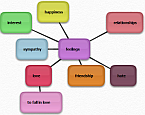5 Best Practices for Managing Requirements in Agile Projects
Success of agile project management greatly depends on the approach to requirements specification which includes several best practices. The agile approach promotes a highly iterative, collaborative environment in which the team, project manager and senior stakeholders enjoy flexibility in addressing any inherent risks associated with managing requirements. An interesting feature of this approach is that a change to project requirements can be turned into a competitive advantage later on, as compared to the traditional approach which doesn’t ensure adaptability to the changing environment. In this article, I write about 5 best practices for managing requirements in agile projects.
















